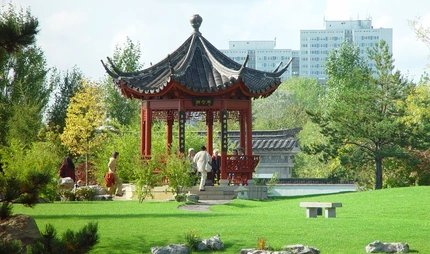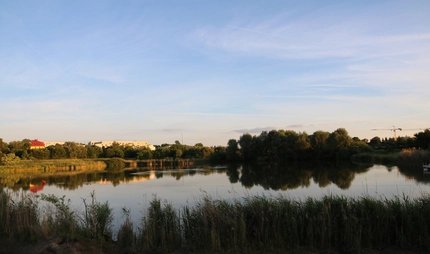
Alte Börse Marzahn
Art and Beer in a Former Animal Auction Barn
Between the prefabricated concrete buildings of Marzahn, stands the Alte Börse Marzahn with its brick buildings and old linden trees. Almost village-like.
Marzahn is home to row after row of massive, Communist-era housing estates and often still has to struggle against the negative image many associate with that. In the meanwhile, a vibrant social life and culture has developed
in this district made up of prefab high-rises, single family homes and industrial parks. Alte Börse Marzahn opened its doors here in 2013.
Sheep and soldiers
Founded in 1900 as the Magerviehhof Friedrichsfelde at the city's edge, this was a trading centre for livestock with a flurry of activity, especially on sale days. Cattle, pigs, geese and sheep were sold here. It even had its own railway station, post office and inn. In fact, it was the largest facility of its kind in Germany. After 1945, the site was used by the Red Army and was where those arrested during the 17 June 1953 uprising were first taken. Later, the East German army took control of the site.
A site with potential
The Alte Börse offers space for events, meetings, workshops or readings. Some of the historic buildings, such as the coachman's room and the old freight station have been lovingly restored. Other parts of the 30,000 m² site still have the undeveloped potential for which Berlin became famous in the 1990s. Strings of colourful bucket-shaped lights hang between old trees, while wild plants take over the space between the buildings.
GDR charm around the Helene-Weigel-Platz
All around Helene-Weigel-Platz, the prefabricated tower blocks are up to 21 storeys high. Take a stroll through the area around Helene-Weigel-Platz after visiting the Alte Börse : shopping arcades, a large swimming baths with sauna and the historic town hall are all nearby.
Find out more about the city’s neighbourhoods with our Going Local Berlin app.
CLOSED


